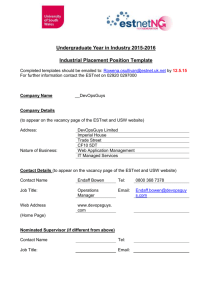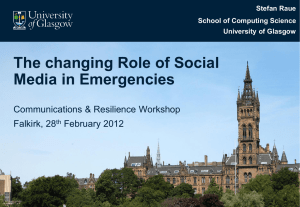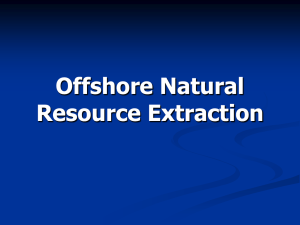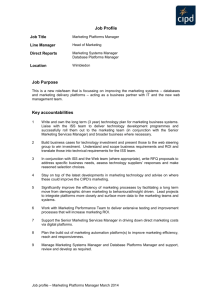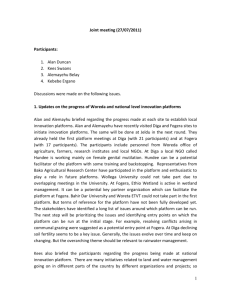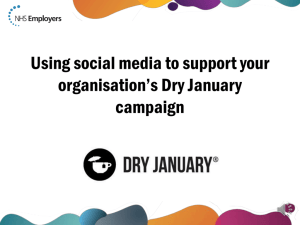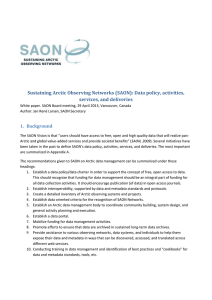SAON White Paper on Platforms - Sustaining Arctic Observing
advertisement
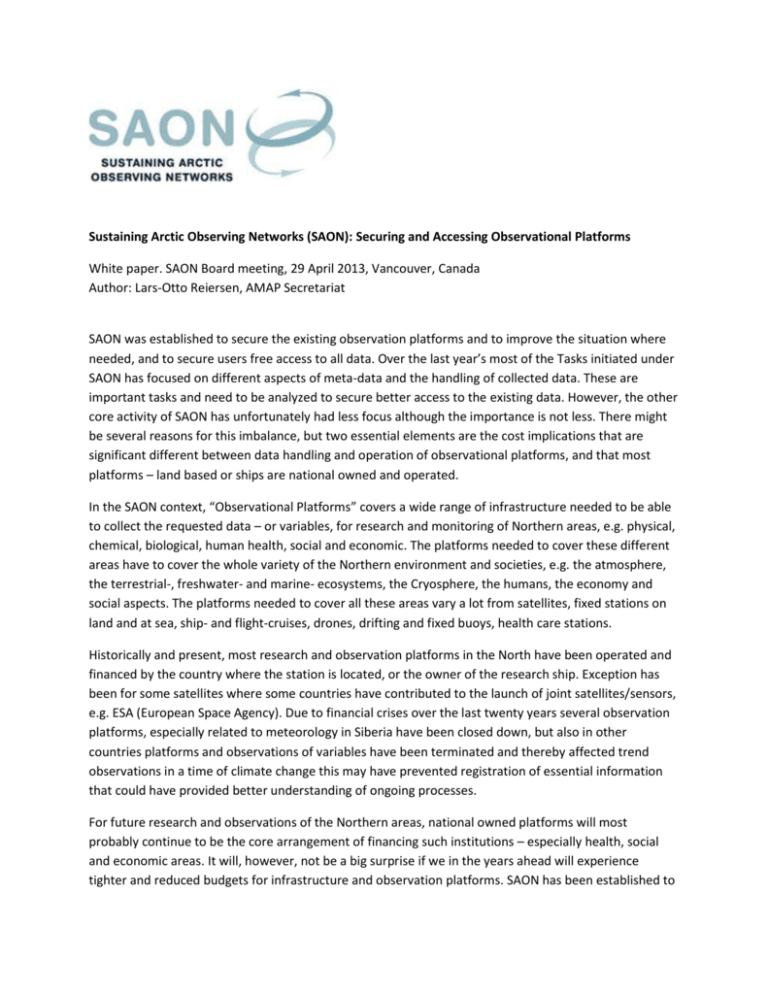
Sustaining Arctic Observing Networks (SAON): Securing and Accessing Observational Platforms White paper. SAON Board meeting, 29 April 2013, Vancouver, Canada Author: Lars-Otto Reiersen, AMAP Secretariat SAON was established to secure the existing observation platforms and to improve the situation where needed, and to secure users free access to all data. Over the last year’s most of the Tasks initiated under SAON has focused on different aspects of meta-data and the handling of collected data. These are important tasks and need to be analyzed to secure better access to the existing data. However, the other core activity of SAON has unfortunately had less focus although the importance is not less. There might be several reasons for this imbalance, but two essential elements are the cost implications that are significant different between data handling and operation of observational platforms, and that most platforms – land based or ships are national owned and operated. In the SAON context, “Observational Platforms” covers a wide range of infrastructure needed to be able to collect the requested data – or variables, for research and monitoring of Northern areas, e.g. physical, chemical, biological, human health, social and economic. The platforms needed to cover these different areas have to cover the whole variety of the Northern environment and societies, e.g. the atmosphere, the terrestrial-, freshwater- and marine- ecosystems, the Cryosphere, the humans, the economy and social aspects. The platforms needed to cover all these areas vary a lot from satellites, fixed stations on land and at sea, ship- and flight-cruises, drones, drifting and fixed buoys, health care stations. Historically and present, most research and observation platforms in the North have been operated and financed by the country where the station is located, or the owner of the research ship. Exception has been for some satellites where some countries have contributed to the launch of joint satellites/sensors, e.g. ESA (European Space Agency). Due to financial crises over the last twenty years several observation platforms, especially related to meteorology in Siberia have been closed down, but also in other countries platforms and observations of variables have been terminated and thereby affected trend observations in a time of climate change this may have prevented registration of essential information that could have provided better understanding of ongoing processes. For future research and observations of the Northern areas, national owned platforms will most probably continue to be the core arrangement of financing such institutions – especially health, social and economic areas. It will, however, not be a big surprise if we in the years ahead will experience tighter and reduced budgets for infrastructure and observation platforms. SAON has been established to secure and improve the observation networks, therefore, SAON should, as soon as possible, start a process to clarify what is the probable development (survival) regarding observation platforms in the North for the next decade or two and to analyze how best SAON can influence on national plans, priorities and decisions regarding securing/improving research and observation platforms. In this process one should also analyze possibilities/options and strategies that could be applied to achieve an extended use of joint funding of platforms – preparing for more long term joint funded international platforms. This may involve several countries, private funding and foundations. The “SIOS project – Svalbard Integrated Arctic Earth Observing System” that is under development at Svalbard might be one out of several strategies that should be analyzed to learn what could be done I the future. This type of cooperation performed by SAON may if performed in the right way contribute to secure some platforms for long term research and observations. For SAON to be in such a position, it will be important to do some good homework – documenting the local, regional and global needs and benefits of the research and observations to be made at these observation platforms. INTERACT is an EU funded terrestrial focused project that has provided a very interesting overview of the existing terrestrial platforms and what they are “observing”. This study is of great value for SAON and for an analysis of funding options. Similar overview of platforms operating for the other environmental areas would be very interesting for SAON. At several National stations and ships in the North, there are normally scientists from several countries working on joint and independent research projects. However, there are also some platforms closed for foreigners, and such restrictions are often put in place by the military. It is not easy to change the mind of the military. SAON should promote openness for scientists at research and observation platforms to achieve better exchange of data and better results, but at this stage SAON should maybe not spend too much time and effort on the military part. Having scientists from several countries working together at a platform, one will achieve better transparencies for available data and data sharing that is extremely important for research, monitoring and assessment. In addition, multinational scientific work at a platform, do open up for joint funding of the activities at the stations, and thereby to secure the activities and operations. The next step. If there is a support among the SAON Board, the SAON Secretariat in cooperation with data users and providers, could prepare a first “simple” overview of some existing observing platforms and their financial situations and “life expectation”. This can be done by calling for an update of the national inventories that SAON performed a few years ago – by adding a question or two related to the long term financing situation, and the national view on international funding of the operations of some stations? A SAON analyzes of the information gathered could set the stage for further planning and work to achieve more secured/joint funding of some of the observation platforms, and thereby also accessibility for foreign scientists. If there is an interest for joint funding, a more detailed planning of how this might be done/implemented need to be performed. The variety of research and observations in questions and conflicting national interests might not be easy to handle. There is most probably not one optimal solution/strategy for securing/improving all types of observations and research, but several possible solutions may exist of which some are better adjusted for some type of platforms/countries than for others. Today it is important to start the process to clarify the problem better, what might be possible to do and how it might be implemented. Without this initiative from SAON, we may experience an unwanted reduction in observation platforms in the future, and as a consequence, this might harm future science, monitoring and assessments, and thereby decisions to be made by decision makers and affecting the people living in the North.

